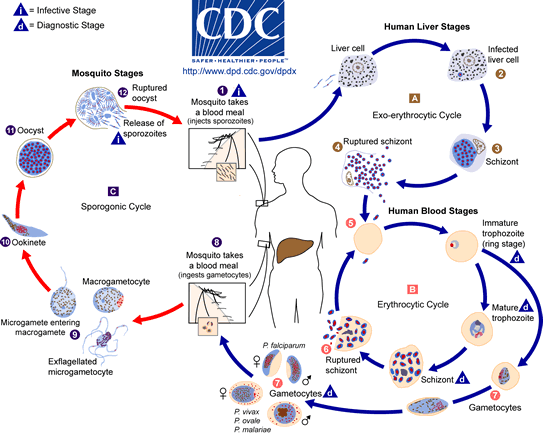QUESTION
What is the classification of malaria?
ANSWER
Malaria is caused by a single celled protist of the genus Plasmodium. This genus is part of a Phylum of single-celled protist organisms called Apicomplexa.
The Apicomplexans mostly posses an organ called an apicoplast, which is part of an apical structure designed to aid entry into a host cell. The Apicomplexa is split into two Classes, of which Plasmodium belongs to the Aconoidasida (lacking a structure called a conoid, which is like a set of microtubules), and then to the Order Haemosporidia, which contains parasites which invade red blood cells. Within this Order, Plasmodium belongs to the Family Plasmodiidae, which all share numerous characteristics, including asexual reproduction in a vertebrate host and sexual reproduction in a definitive host (a mosquito, in the case of the Plasmodium species that infect all mammals, including humans).
In the case of human malarias, the definitive host is often referred to as the vector. The family contains about twelve genera, of which one is Plasmodium, which itself is now often divided up into numerous sub-genera, and then again into hundreds of different species, of which five infect humans (P. falciparum, P. vivax, P. ovale, P. malariae and P. knowlesi).
